Research Locations
Laboratories, infrastructure, open field
Testing, checking, validating – ForWind has built up a unique in-house research infrastructure over the past 20 years. If the partners from the Wind Energy Research Alliance are included, ForWind researchers can investigate and model almost all processes and phenomena along the wind energy value chain.

WindLab and turbulent wind tunnel, Carl von Ossietzky University of Oldenburg
ForWind inaugurated the WindLab on the Oldenburg campus in 2017. The centerpiece of the new building with 2,300 square meters of floor space is a turbulent wind tunnel that can be used to study the interaction of atmospheric flows with wind farms, wind turbines and their components. In this way, exact data on the operating behavior of wind turbines and large offshore wind farms are determined.
The wind tunnel is used by physicists, meteorologists, oceanographers and engineering scientists from Carl von Ossietzky University Oldenburg and Leibniz University Hannover, Jade University of Applied Sciences, the Fraunhofer Institute for Wind Energy and Energy System Technology (Bremerhaven) and the Max Planck Institute for Dynamics and Self-Organization (Göttingen).
Acoustic wind tunnel, Carl von Ossietzky University of Oldenburg
The acoustic wind tunnel from ForWind is a closed wind tunnel with a cross-section of 1 m x 0.8 m. It is soundproofed and can be operated either with a closed test section of 2.7 m or an open test section of 2.0 m in length at wind speeds of up to 50 m/s. Various active grids can be used to generate customized wind conditions (emulated from atmospheric measurements or designed for specific turbulence characteristics). High-resolution measurement techniques (hot-wire, stereo PIV, 2D LDA, pressure sensors, force balances) can be used in various applications. Blade profiles can be tested for re-numbers up to 1,000,000. Model wind turbines with rotor diameters of up to 0.6 m are available for testing.
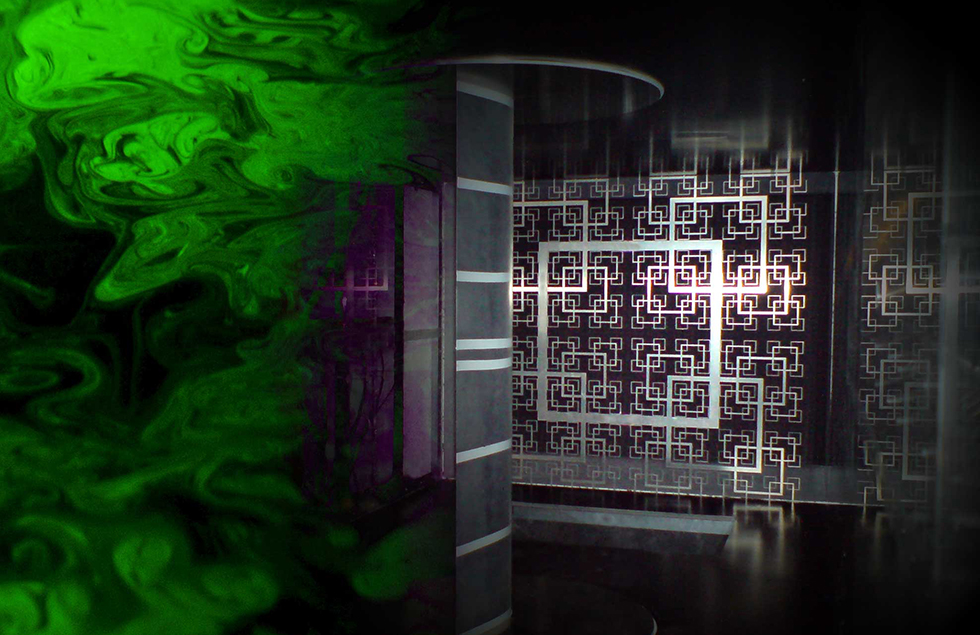
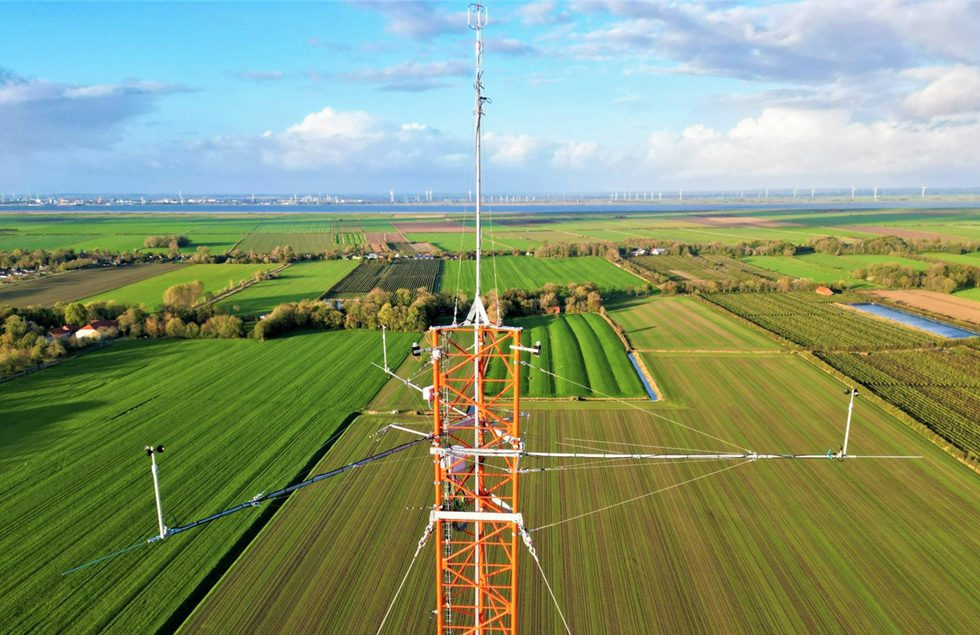
Krummendeich Research Wind Farm, Wind Energy Research Association
The Wind Energy Research Park (WiValdi) enables full-scale research to develop technologies to increase the acceptance, efficiency and cost-effectiveness of wind turbines. Accordingly, various DLR institutes and facilities and the partners from the Wind Energy Research Alliance (the Fraunhofer Institute for Wind Energy Systems – Fraunhofer IWES and ForWind – Center for Wind Energy Research at the Universities of Oldenburg, Hanover and Bremen) are building the research park. It will later be used by the wider research community.
Large wave flow channel (GWK+), Leibniz Universität Hannover
The GWK+ has been the further development of the Large Wave Current Channel at the Coastal Research Center since 2023. The Forschungszentrum Küste is an institution of the Leibniz Universität Hannover and the Technische Universität Braunschweig.
With a new more powerful wave machine, larger waves and loads can be generated, which will allow even more realistic testing and further development of structures under extreme conditions. The waves are generated by a 7 m high dry back piston type wave flap, whose maximum stroke is 7.5 m. Thus, a maximum generatable wave height of approx. 3 m can be achieved. At the same time, the system is designed for active absorption of reflected waves.
A flow generation facility can be used to generate tidal currents, for example, to study their loading on sediment stability and structures, and to consider and analyze nonlinear wave-current interactions. The flow facility consists of 2 inlet and outlet structures, respectively, 152 m apart. The flow is directed into the channel through an opening at the bottom. The flow profile can be optimized with individually controllable louvers in the openings.


GeCoLab – Generator converter test bench, Leibniz Universität Hannover
The generator-converter test bench (GeCoLab) can be used to research both conventional and innovative converter and generator concepts, including converter-related control and filter design methods in the MW range. The implemented universal test bench enables the investigation of steady-state and dynamic properties of electrical machines and converters, including converter-machine interactions. This includes studies of dynamics and system stability, steady-state and transient thermal loading, various methods of grid injection and control, and behavior in the event of grid faults such as voltage dips, phase shorts, or ground faults. The test bench will also enable research into interactions between the converter and generator and their influence on other plant components such as bearings and gearboxes.
3D wave flow basin, Leibniz Universität Hannover
The 3D wave current basin (wave machine with 72 individual wave blades) at the Ludwig-Franzius-Institute for Hydraulic, Estuarine and Coastal Engineering at Leibniz Universität Hannover makes it possible to answer many questions from basic research as well as to investigate practical engineering problems such as breakwater head stability, research into structural interaction with multidirectional swell, spatial scour phenomena, etc. (max. wave height: 0.32 m, length: 20 m, width: 40 m, depth: 1 m, depth: 7 m x 9 m, depth: 2 m).(max. wave height: 0.32 m, length: 20 m, width: 40 m, depth: 1 m, deep section: 7×9 m, 1.2 m deep, regular, irregular, directional waves, active wave absorption, current: 5 m³/s).
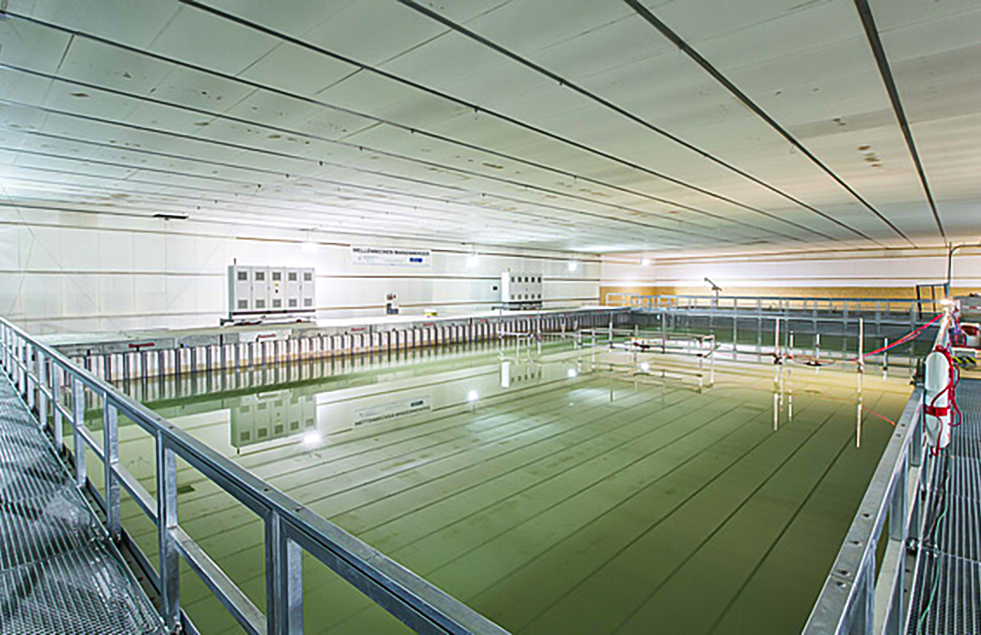
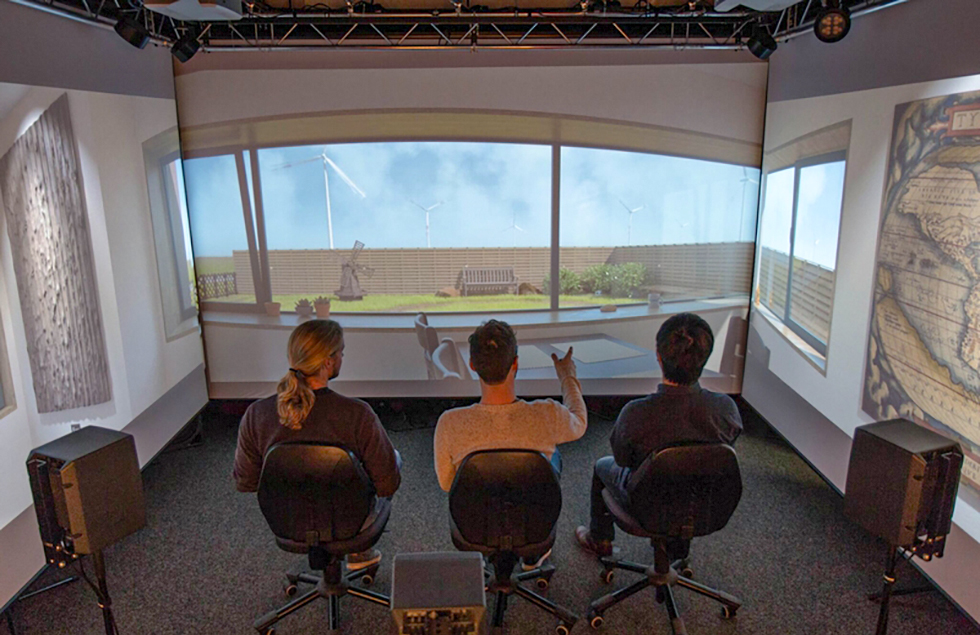
Immersive Media Lab, Leibniz University Hannover
Since November 2016, the Institute of Communication Technology at Leibniz Universität Hannover has been operating an immersive media lab for creating virtual acoustic environments. Various playback systems with up to 48 channels can be operated in the 30 square meter room. This means that both classic surround sound systems (5.1, 7.1) and modern 3D audio systems (Auro3D 9.1, NHK 22.2, DTS-X) and proprietary Ambisonics and VBAP playback systems can be implemented.
HiPE-LAB, University of Bremen
In wind turbines, the power electronics must endure both the electrical loads and possible harsh environmental conditions. The combination of environmental stresses and electrical operating loads to which the power electronics are exposed is therefore crucial for the service life of the systems. Predicting the effect of these multimodal loads during the development phase is therefore of great importance for avoiding field failures and thus for the long-term success of the product. The laboratory for high-performance electronics HiPE-LAB of the IALB at the University of Bremen offers the unique opportunity to expose entire frequency converters with outputs of up to 10 MVA to electrical and climatic loads in almost any combination and to carry out tests to predict important issues relating to service life. In the field of wind energy, we – as a member of ForWind – work closely with Fraunhofer IWES.


HPC Cluster, Carl von Ossietzky University of Oldenburg
In addition to free-field measurements and laboratory experiments, numerical simulations are an important pillar of current research questions. In this way, research achieves a comprehensive understanding of turbulent wind conditions and their interaction with wind energy systems. The high-performance computers at the Carl von Ossietzky University of Oldenburg will profitably combine different modeling and simulation methods. This will enable the physical properties of the wind flow to be mapped even more precisely – both with regard to individual wind turbines and entire wind farms.
Research wind turbine, University of Bremen
The ForWind Institute BIMAQ (Bremen Institute for Metrology, Automation and Quality Science) and Deutsche WindGuard GmbH from Varel operate the 180-meter-high “UNI Bremen” research wind turbine in the Bremen Industrial Park. Systematic investigations are being carried out on the 3.4-megawatt plant to develop and test practicable solutions in plant technology. It is intended to provide measurement data for improvements in the design, material selection, manufacturing and control of wind turbines.
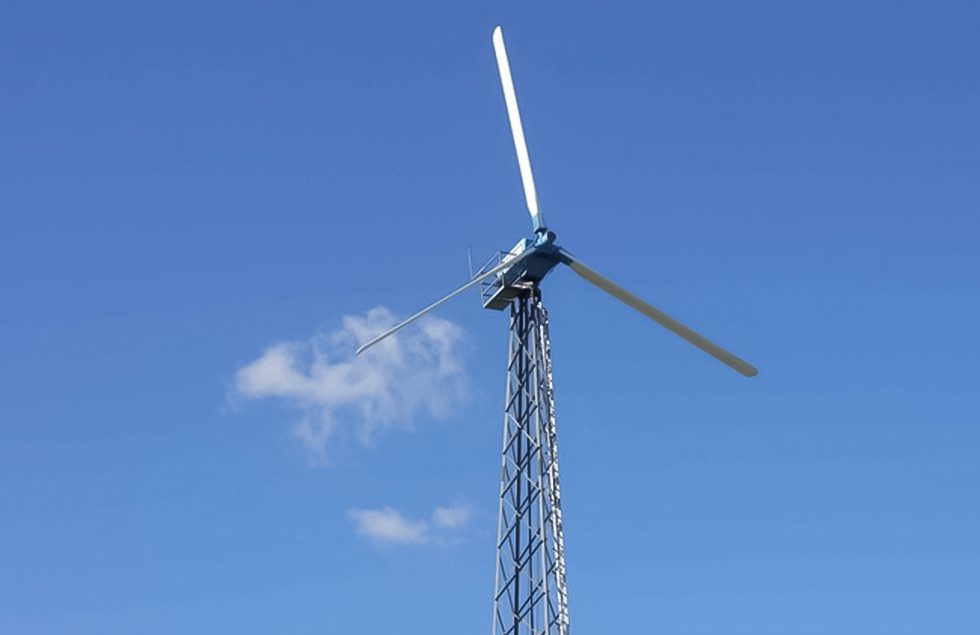

MARUM – Center for Marine Environmental Sciences, University of Bremen
The Marine Engineering Geology working group at the Center for Marine Environmental Sciences (MARUM) at the University of Bremen is a member of ForWind. For this reason, a wide range of tasks in sediment mechanics and shelf geology are described and quantified in basic research using engineering geology, geotechnical, sedimentological and geophysical methods. Examples include determining relative stratigraphies using the degree of compaction, assessing slope stability, and measuring hydraulic permeabilities of shorelines and shelf sediments. Accordingly, the Transfer division focuses on the scientific support of industrial, geotechnical pilot projects and large-scale projects in the run-up to and during construction measures. The focus here is therefore on renewable energies and their offshore and onshore implementation (e.g. geotechnical support for offshore wind farm projects).
Test Center for Load-bearing Structures, Leibniz Universität Hannover
Large-scale experimental studies are necessary to investigate the fatigue and load-bearing behavior of wind turbine foundations and support structures. The results are used to validate simulation results. The Test Center for Support Structures is involved in numerous research projects and carries out extensive test campaigns on large structural components of onshore and offshore wind turbines.





